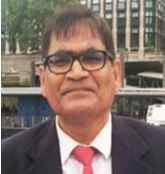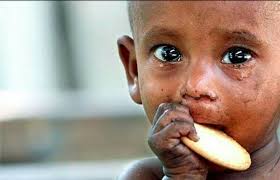 Professor Satya Narayan Misra in Bhubaneswar, June 27, 2022: Recall the debate set off by Amartya Sen when he claimed that millions of women were “missing”, referring to the number of females who have died as a result of unequal access to intra-household resources, nutrition, and healthcare.
Professor Satya Narayan Misra in Bhubaneswar, June 27, 2022: Recall the debate set off by Amartya Sen when he claimed that millions of women were “missing”, referring to the number of females who have died as a result of unequal access to intra-household resources, nutrition, and healthcare.
There is a need to analyse the role of public policy and institutions in correcting these blatantly oppressive prejudices which run deep in the society resulting in female survival disadvantage, and the role of gender budgeting and Woman specific programs like Mission Shakti in Odisha in combating serious gender inequality and empowering women in terms of livelihood opportunity.
The Gender Inequality Report (UNDP: 2021) brings out how Maternal Mortality Rate (MMR) continues to be disconcertingly high,with 174 deaths per lakh All India and 222 per lakh in Odisha. China has brought MMR down to 27 and South Korea to 9. Their per capita income was behind India in 1951. The female labor force participation rates also show huge asymmetry compared to men (23.6% vs 78.6%) and dwindling.
The recently released NFHS V (National Family Health Survey) for 2019-21 bring out how anemia amongst among adolescent girls& women (15-49 years)has gone up All India from 53.1% in 2015-16 to 57%. Odisha shows a very distressing trend, with anemia % going up from 51% (2016) to 65% in 2021. This is in the backdrop of Government of India’s Poshan Abhiyan in 2017, with a target to reduce anemia among adolescent girls @ 3% per year. The political rhetoric quite clearly does not match up with grass root reality.
Gender budgeting was introduced in 2005-06 in India to provide gender lens to processes, resources and institutional mechanism to mitigate blatant gender inequities and address specific programs for women like Integrated Child Development Services, Matru Vandana & Ujjawala. Odisha has been at the forefront of Women specific missions like Mission Shakti since 2001 by hand holding Women Self Help Groups.
Around 70 lakh women and 6 lakh SHGs are part of this mission to strengthen livelihood initiatives, provide market linkages, and mediating with formal financial institutions. A concrete outcome of this mission is fish harvesting by Women SHGs, with earnings of around Rs 40 Cr per year and subsidy relief of around Rs 14 Cr. The CM has unveiled a five-year plan allocation of Rs 4973 Cr, including Rs 40000 cr in bank credit and interest subvention component of Rs 1200 cr.
However, several studies have unmasked serious fault lines of Mission Shakti. In a study of 15339 SHGs in three districts, Ganjam, Gajapati & Puri, it has been brought out how 30-40% women did not get any loans. Bank linkages in majority cases are limited to opening of bank accounts. In another perceptive study by Rajpal & Tamang (2020), they have brought out great difference between tribal and non-tribal districts. Besides, there is massive dependency on mediators for marketing of products by SHGs.
They suggest that institutions must improve gamut of services and provide large amount of loans, facilitate product marketing and promote group business. Financial inclusion and deepening will happen only if the formal institutions eschew their ostrich like approach towards financially vulnerable sections of the society. The state should also provide for fiscal stimulus like collateral free loans as Government of India did during Covid 19 to support MSMEs.
Technology can play a trans-formative role in combating the vicious cycle of malnutrition amongst children and adolescent girls. The NFHS V report, alluded has also brought out how close to 35.5% of our children are stunted due to persistent malnutrition and deplorable hygienic condition. The ICDS – CAS software to connect front line workers and track nutrition programs in Anganwadi centres can be a very potent device.
 The 14 lakh Anganwadis where 22 lakh Anganwadi workers are the fulcrum provide supplementary nutrition& basic health care to around 70 million children in the age group of 0-6 years and 18 million expecting and nursing mothers, mostly from poor families. The high incidence of stunting amongst children and anemia among mothers is largely due to non-supply of micronutrients, vitamins and folic acid in a timely manner. It is only through technology that the bugs in the supply chain management can be fixed. Ashita Munjaral has brought out how by adapting smart technology in Angul district of Odisha, Angul Pusti Adhikar Abhiyan (APPA), they have been able to break the vicious cycle of malnutrition.
The 14 lakh Anganwadis where 22 lakh Anganwadi workers are the fulcrum provide supplementary nutrition& basic health care to around 70 million children in the age group of 0-6 years and 18 million expecting and nursing mothers, mostly from poor families. The high incidence of stunting amongst children and anemia among mothers is largely due to non-supply of micronutrients, vitamins and folic acid in a timely manner. It is only through technology that the bugs in the supply chain management can be fixed. Ashita Munjaral has brought out how by adapting smart technology in Angul district of Odisha, Angul Pusti Adhikar Abhiyan (APPA), they have been able to break the vicious cycle of malnutrition.
There is also a need to provide quality education and inculcate appropriate skilling among girl child and women. Most studies demonstrate a high positive correlation between education of mothers and impact on children and improvement in Human Development Indices. The Global Gender Gap Report (2020) bring out how only 22% AI professionals are women. Industry 4.0 where good employment opportunity exists need proficiency in AI, robotics, machine language and IOT(Internet of Things).
Studies have shown that the dwindling female work force participation in India is due to sharp fall in agricultural employment, with only 18% female constituting total rural work force in manufacturing and services. The NITI Ayog report also brings out how the SKILL India initiative is predominantly oriented towards jobs for male workers, with only 8% women benefiting from SKILL India mission.
Women are the most vulnerable sections of the society, particularly during economic upheavals like Covid 19. CMIE reports that 17 million women lost jobs in April 2020. Study by Social Studies Trust brings out how 83% women faced severe income drop and how there was a 63% increase in unpaid work. National Commission of Women has brought how there was a sharp spurt in domestic violence, with UP & Delhi leading the way. Nutrition, Poor education, health care and skilling are cardinal challenges for children, adolescent girls& mothers of poor families, who form a sizeable section of the society.
These humungous problems cannot be solved by government led missions like Mission Shakti alone. It has to be approached in an integrated manner by several departments like Education, Women & Child Development, Heath & family welfare, Skill India & IT. Geffrey Sachs, the leading light of SDG, rightly brings out that these human development initiatives cannot be solved by a market economy approach , where profit is the driver , but by an empathetic society led approach, where the government, corporates, NGOs and local communities work as partners.
• Professor Misra is Professor Emeritus in Kiit University


Leave a Reply
Be the First to Comment!